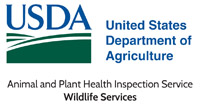Authors
Jacquelyn C. Guzy, United States Geological Survey, Wetland and Aquatic Research Center, Davie, FloridaFollow
Bryan G. Falk, United States Geological Survey, South Florida Field Station
Brian J. Smith, Utah State University
John David Willson, University of Arkansas
Robert N. Reed, United States Geological Survey, Fort Collins Science Center, Fort Collins, Colorado
Nicholas G. Aumen, United States Geological Survey, Southeast Region, Loxahatchee, Florida
Michael L. Avery, United States Department of Agriculture, National Wildlife Research Center, Florida Field Station, Gainesville, Florida
Ian A. Bartoszek, Conservancy of Southwest Florida
Earl Campbell, United States Geological Survey, Ecosystems Mission Area, Reston, Virginia
Michael S. Cherkiss, United States Geological Survey, Wetland and Aquatic Research Center, Davie, Florida
Natalie M. Claunch, University of Florida
Andrea F. Currylow, United States Geological Survey, Fort Collins Science Center - South Florida Field Station in Everglades National Park, Homestead, Florida
Tylan Dean, United States National Park Service, Everglades and Dry Tortugas National Parks, Homestead, Florida
Jeremy Dixon, United States Fish and Wildlife Service, Crocodile Lake National Wildlife Refuge, Key Largo, Florida
Richard Engeman, United States Department of Agriculture, National Wildlife Research Center, Fort Collins, Colorado
Sarah Funck, Florida Fish and Wildlife Conservation Commission
Rebekah Gibble, United States Fish and Wildlife Service, Boynton Beach, Florida
Kodiak C. Hengstebeck, University of Florida
John S. Humphrey, United States Department of Agriculture, National Wildlife Research Center, Florida Field Station, Gainesville, Florida
Margaret E. Hunter, United States Geological Survey, Wetland and Aquatic Research Center, Gainesville, Florida
Jillian M. Josimovich, United States Fish and Wildlife Service, Avon Park, Florida
Jennifer Ketterlin, United States Fish and Wildlife Service, Pacific Southwest Region, Sacramento, California
Michael Kirkland, South Florida Water Management District
Frank J. Mazzotti, University of Florida
Robert McCleery, University of Florida
Melissa A. Miller, University of Florida
Matthew McCollister, United States National Park Service, Big Cypress National Preserve, Ochopee, Florida
M. Rockwell Parker, James Madison University
Shannon E. Pittman, Athens State University
Michael Rochford, University of Florida
Christina Romagosa, University of Florida
Art Roybal, United States Fish and Wildlife Service, Florida Ecological Services Field Office, South Florida Office, Vero Beach, Florida
Ray W. Snow, United States National Park Service, Everglades National Park, Homestead, Florida
McKayla M. Spencer, Florida Fish and Wildlife Conservation Commission
J. Hardin Waddle, United States Geological Survey, Wetland and Aquatic Research Center, Gainesville, Florida
Any A. Yackel Adams, United States Geological Survey, Fort Collins Science Center, Fort Collins, Colorado
Kristen M. Hart, United States Geological Survey, Wetland and Aquatic Research Center, Davie, Florida
Date of this Version
2023
Citation
NeoBiota (2023) 80: 1–119
doi: 10.3897/neobiota.80.90439
Abstract
Burmese pythons (Python molurus bivittatus) are native to southeastern Asia, however, there is an established invasive population inhabiting much of southern Florida throughout the Greater Everglades Ecosystem. Pythons have severely impacted native species and ecosystems in Florida and represent one of the most intractable invasive-species management issues across the globe. The difficulty stems from a unique combination of inaccessible habitat and the cryptic and resilient nature of pythons that thrive in the subtropical environment of southern Florida, rendering them extremely challenging to detect. Here we provide a comprehensive review and synthesis of the science relevant to managing invasive Burmese pythons. We describe existing control tools and review challenges to productive research, identifying key knowledge gaps that would improve future research and decision making for python control.



Comments
United States government work